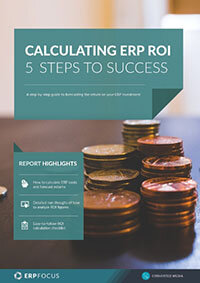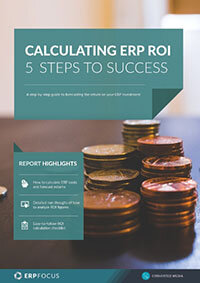How four ongoing ERP costs can drastically affect system ROI
Assume that an enterprise is being driven by a fully-integrated ERP platform, and you are the person responsible for making all of the wheels turn on a daily basis. In the event, you would probably accept that virtually ‘everything’ inside the company influences ERP management and administration. You might also think that cost control would be pro forma and no particularly concern on a daily basis. You would be wrong.
When considering ERP systems, managers accept and readily understand cost in terms of the technology itself, since these costs are often prerequisites of system implementation. However, what happens to ERP costs once all the implementation technical glitches are laid to rest and things appear to be running smoothly down the road? If you’re not paying attention to ongoing ERP costs, chances are your ROI calculations are brandishing unexpectedly poor returns.
1. Integration management
This particular ongoing cost has existed since time immemorial, or at least since ERP systems matured to the degree that they have become the linchpins of many businesses. Consider today’s interest in integrating other business systems with ERP. These systems create open data channels that are largely driven by unmanned processes.
If you’re not paying attention to ongoing ERP costs, chances are your ROI calculations are brandishing unexpectedly poor returns.
What happens if one of those utilities creates a low-level incompatibility within core ERP platform processes, or worse trigger a series of irregular internal processes that skew the accuracy of an enterprise’s reporting system? These cost impacts are rarely caught up-front unless a manager is looking right at them, which means more repair and recovery time, i.e. more ERP costs and lower ROI.
2. Operational efficiency
Unless a manager is particularly attentive to lost operational efficiencies, the costs involved can cripple a business over time. Just like integration management these costs are largely hidden and unannounced until something bad happens; at this point, you’d better get your checkbook out.
Recommended reading: How to calculate ERP ROI: the 5 stages
The costs involved are primarily triggered by ERP users doing the wrong things at the wrong time, rather than the systems themselves. Regardless of what folks may assert in terms of the level of sophistication of today’s ‘intuitive’ ERP platforms, the fact is that digital machines are just that, machines. If a user is playing fast and loose with business rules inside an ERP system, the ‘fit will hit the shan’ sooner rather than later and the recovery process often spews out cost after cost.
3. Supply-chain inefficiency costs
These hidden ERP costs are particularly prevalent in the case of automated manufacturing ERP processes, since what goes into the front-end of a production line has a direct impact on final product efficiency at the back-end. Over the last 20 years more and more suppliers have begun to integrate themselves within finished goods producers by means of ERP. Daily raw materials inventory management has become far less important to ERP users as a result.
Over the last 20 years more and more suppliers have begun to integrate themselves within finished goods producers by means of ERP.
Consequently, if a remote supplier suddenly experiences an unannounced slow down when delivering raw materials to a producer, a load-to-system mis-match can easily trigger lost productivity. This often means that costs are immediately incurred in the form of idle machines, and CNC operators.
4. External regulatory cost seepage
This ongoing cost of running ERP is particularly vexing since there are no solid responses other than rigorous management vigilance. In this case, and depending on where you operate, national, state, county and municipal governments love the idea of creating cost-inducing compliance rules.
In an ERP context, these processes are typically driven by established system and business rules that represent cost values. When the suits at a governmental agency decides that regulatory compliance needs a shift in focus, so to must your business processes shift. Aside from the tariffs and taxes that sometimes accompany this shift, many ERP costs rear their ugly heads. From process reconfiguration, to data conversion and reporting, compliance shifts can have a huge impact on how we use our ERP.
Free white paper

Calculating ERP ROI: 5 steps to success
Calculate your new ERP's financial benefits with this comprehensive guide

Featured white papers
-

ERP Software Pricing Guide
Get the latest pricing information on over 80 popular ERP systems, and learn how to budget for your ERP project in our free guide
Download
Related articles
-

28 cost elements to include in your ERP TCO calculation
With differing definitions and more hidden costs than you can shake a stick at, ERP TCO can be a ...
-

CMMC Compliance: What Aerospace and Defense Manufacturers Need to Know
Key insights on CMMC compliance, deadlines, and securing DoD contracts with CMMC 2.0 certificatio...
-

9 hidden ERP costs that can blow your implementation budget
Discover critical cost areas of your ERP project that can wreck your budget

